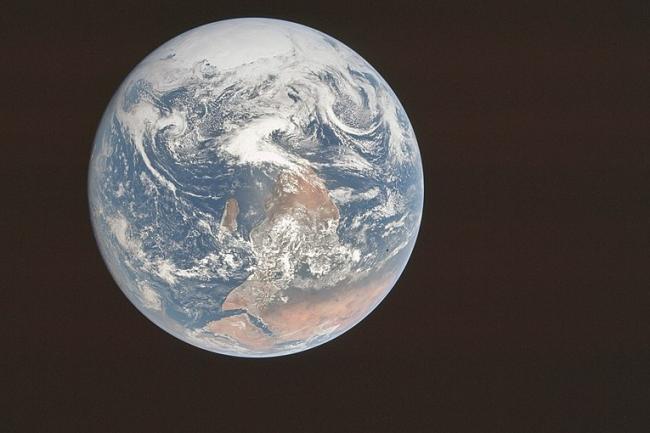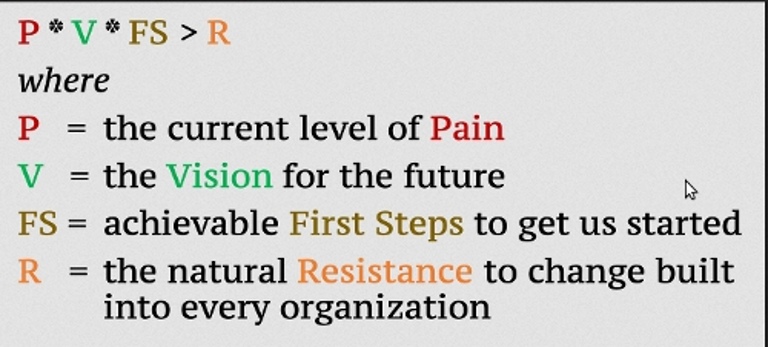Articles Menu

Dec. 5, 2023
America has no idea how to live after the end of fossil fuels. When the country is ready to listen, ecosocialism can provide the answers it needs
Don’t get me wrong. Third parties normally suck. They are consistently unsuccessful in American politics, from Teddy Roosevelt’s Bull Moose Party to this year’s ridiculously transparent “No Labels” party. Third parties usually have only one purpose — to disrupt one of the two main parties — and nothing beyond that. But that’s not what I want to discuss here. Instead I want to introduce a different kind of third party. Borrowing from recent work by degrowth advocate Jason Hickel, I call this new party the “Ecosocialist Party”. The name is not perfect, but it will do for now. The purpose of this party is not to win elections, at least not right away, but to provide an alternative agenda and blueprint for how Americans can live after the end of fossil fuels.
In the near term, this Ecosocialist Party will have two missions. First, it will be an intellectual center for developing a detailed political action plan for transitioning America and the world to a post-carbon, post-growth, lower-energy future, one that can hopefully be arrived at while minimizing disruption, suffering, and conflict. Second, it will provide a political home and source of hope for those of us who find the policies of both current American parties insufficient in light of the climate and resource-depletion crises we are beginning to face. It can be a rallying point, in other words.
In Part 2 of this piece, I consider the longer-term prospects for ecosocialism in America. Although there is great resistance to these ideas in America today, once the myths of eternal growth, infinite fossil fuels, and limiting warming to 1.5°C have fallen away, the governments of the world, including America’s, will have no choice but to accept radical change. The sooner the world reaches that point, the less horrific our future on this planet will be.
Some starting assumptions
Here are the assumptions to start from. If you don’t agree, there is no point in reading any further. You are not operating in the same universe of evidence and facts I am.
That’s the reality for any human hoping to live through most or all of the 21st Century. If you were born in 2000, you’ll probably still be alive to see the 2060s, maybe even the 2080s. If you were born in 2020, like my grandson, you have a good chance of making it to 2100 or beyond, if the planet doesn’t kill you first.
So, let’s get real. What can we salvage from this nightmare we are creating for our children, grandchildren, and all future generations of humanity?
Our outdated mental models can only be abandoned when the pain they produce exceeds the gain they offer
In a previous post, I described a change management tool called the Equation of Change.

As noted in that post, the key to abandoning deeply entrenched mental models is pain. No deeply-held mental model will be abandoned until the pain it produces exceeds the gain it offers. But even if that pain threshold is reached, people will still not change if they don’t see how that pain can be alleviated in a better future. They need to believe in a vision of that future and its feasibility (a replacement mental model, if you will). And even if both the pain and the vision thresholds are reached, people still cannot change if they do not know what to do next to reach that better future. They need clear and actionable first steps to get them started along the path to that better future … not better than ever, just better than the pain they’re experiencing right now.
If we look at the state of pain, vision, and credible first steps today, what do we see? Pain is growing every day, but it is still very unevenly dispersed (source). So far, pain has been clearly greater in the more climate-vulnerable Global South, where floods, heatwaves, and droughts have been most devastating, and weak infrastructures have made recovery slow and and in some cases impossible (source). There has also been a significant increase in pain in the Global North — wildfires in Canada, Australia, and the US, droughts in the American Southwest, floods in Germany, etc. (source) — but these still appear to be “manageable” in the eyes of publics in these countries, because their well-funded governments are still able to present climate-related catastrophes as “one-offs” that can be “cleaned up” and “returned to normal”, although this is obviously not how the people impacted by these events see them (source).
So the pain is bad, but obviously still not bad enough, because we are still clinging to our dominant mental model, our vision of a world of ongoing economic growth fueled by capitalist accumulation, accelerating inequality, and an inability to curb the industries that are the direct cause of the greenhouse emissions cooking our planet today (source).
What our leaders’ current vision of the future does not include — indeed, what it loudly denies — is the reality of over-consumption and overshoot in the wealthy Global North. In other words, the dominant mental model that rules our imaginations today denies that our rapacious capitalist appropriation of the planet’s natural resources is unsustainable. It denies that overshoot is real, and that it can only end in resource depletion, product and food shortages, out-of-control inflation, rationing, and eventually, a total collapse of our carbon-powered consumption and waste-driven world economy (source).
Clearly, a vision/mental model that denies the reality of the damage it inflicts on our planet can provide no viable first steps for how to move beyond the pain it produces. Indeed, it denies that any such steps are necessary. Instead, it offers business-as-usual with some tinkering around the edges … a few EVs here, a wind farm there, “green growth”, and promises to clean it all up with magical carbon capture technologies sometime later in the century (source).
Most politicians operating in the Global North today could never embrace an alternative to economic growth. Even the most passionate climate-focused politicians, like Jay Inslee, Governor of Washington State, are still wedded to the idea that any pro-environmental policies must allow for — indeed, stimulate — the continuation of economic growth. This is a fundamental assumption underlying the “Green New Deal” concept promoted by Alexandria Ocasio-Cortez and others (source). It also underlies every other “Green Growth” initiative. “Growth” is even in the name.
In terms of our Equation of Change, the problem is crystal clear. First, pain does not yet exceed gain for too many countries around the world. Second, those who benefit most from the current system, the small slice of extremely wealthy individuals and investors who receive all gain and no pain from the engine of capital accumulation humanity has created, have the power to block any efforts at real change. They know no politician will ever suggest anything crazy like limiting consumption, because it would be career-ending. Meanwhile, they go on about their business, imagining and planning for a continued poisoning of our planet with fossil fuels far into this century (source, source, source).
I have no idea what level of pain will be necessary for humanity to finally give up its current mental-model fixation on economic growth and capital accumulation. But I suspect it will involve a steady stream of mass-casualty events. How many deaths will it take before we accept the fact that our civilization is unsustainable? One billion? Two billion? Six billion?
How much suffering will we have to endure before we finally accept that growth is the disease, not the cure?
We can expect the percentage of the population willing to embrace our leaders’ denial to shrink as climate shocks to the system accumulate. When will people be ready to say “enough is enough”? I do not know. Perhaps it will be too late to save some vestige of our current civilization, perhaps not. But there will come a time when a broken world will finally be ready to consider real change. And when that time comes, new leaders must be ready to provide the leadership required. And to be ready, we must start preparing today.
Ecosocialism: A vision for a post-growth world
Ecosocialism might be described as a political strategy for creating a sustainable human presence at global, national, regional, and local levels capable of surviving climate change and resource depletion. It starts from a scientific understanding of what is required to bring the world’s human population into balance with the realities and resources of a much hotter planet (which is now inevitable). This requires acknowledging and addressing two global crises simultaneously:
How these crises come together can be illustrated by one gobsmacking statistic:
Today, the world’s millionaires, all by themselves, are on track to burn 72% of the carbon budget that would otherwise be available to keep the planet under 1.5°C of warming. (source)
In order to address these two simultaneous crises and achieve this desired balance, ecosocialism asks the wealthy nations of the Global North to embrace three radical goals (source):
Each of these goals is now the subject of a large and growing body of literature devoted to identifying realistic paths toward its achievement (source). But so far, these ideas have achieved much less traction in the United States than, for example, in Europe, where the European Parliament recently sponsored a large “Beyond Growth” conference earlier this year (source). In America, many small, fragmented groups embrace the ideas of degrowth, post-growth, and ecosocialism to various degrees, but their political influence is minimal. They operate mostly at the local level, where citizens groups can have a greater impact on community decisions. But at state and national levels, there is no central organization that represents and coalesces these efforts into a national movement. This is what I propose an Ecosocialist Party could do, or at least start doing.
There is a well-traveled quote, often erroneously attributed to 19th century philosopher Arthur Schopenhauer, that is relevant here:
“All truth passes through three stages: First, it is ridiculed. Second, it is violently opposed. Third, it is accepted as self-evident.” (source)
Today, in America, degrowth ideas and any ecosocialist proposals that might follow from them are clearly in the “ridicule” stage. These ideas are so antithetical to the prevailing mental model of ongoing growth and unlimited consumption that they are usually treated as a joke, or some kind of romantic utopianism (source, source, source). We can expect “violent opposition” to emerge only when these ideas start becoming a serious threat to the current status quo and economic hierarchy.
When might that happen? On to Part 2 …